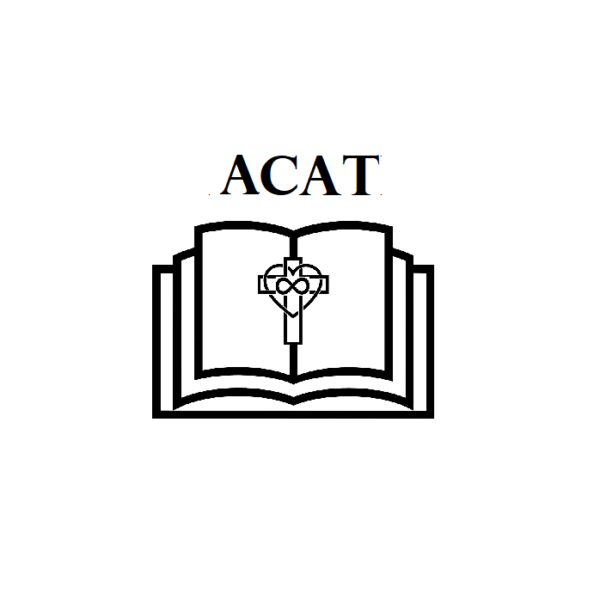ACAT 1: Basic Catholic Prayers
The Baltimore Catechism begins not with instruction but with the most frequently heard prayers in the Catholic faith. Why start here? What motivated the Catholic scholars to start with prayers before we even get into the premise of our faith? Wouldn’t it make more sense to start by explaining God and what we know about Him before we dive straight into how to invoke Him and converse with Him?
When the Baltimore Catechism was first published in 1891, then again in 1921, the concept of a user’s manual did not exist yet in the common American vernacular. Nowadays, manuals are passé. Most consumer products are designed to be user-friendly, plug-and-play, unbox and go. What we see more and more is a “Quick Start Guide” or reference card as an alternative to a more lengthy instruction book.
The choice to begin with prayer instead of doctrine is very much like a Quick Start Guide to the Catholic Faith. One could see simply the words to be memorized in order to fit in and participate right off the bat, or one could see what these words represent and glean the fundamental summary of our faith right here. In a sense, this echoes the experience of social skills instruction: we are taught basic stock phrases to use in certain situations and can skate by nicely if we learn to use each at the proper time, or we can more deeply consider what each means and why each evokes the response it does from those around us.
And so, the Baltimore Catechism introduces the prayers most frequently heard in the Catholic faith which also act to summarize the scope of our beliefs. We have the Our Father, Hail Mary, Apostles’ Creed, Confiteor, and the Acts of Faith, Hope and Love as our Quick Start Guide. No time to unpack the finer elements comprising our faith? Then, become familiar with these prayers and recite them with sincerity to experience what being Catholic is all about.
It is greatly tempting to take any of these prayers and expound on their meaning; likewise, to write at great lengths about prayer itself, since that alone is a concept which confounds and has confounded people of all neurotypes from the beginning of time. Some people find prayer natural, and others find it impossible. Some pray primarily with words; others with actions; others with song; others by experience. It is said there is no wrong way to pray. Within the Mission of Saint Thorlak, we simplify prayer to mean: deliberate relationship with God. For those of us on the spectrum, this makes a bold clarification, as everything with us seems to come down to “relationship” and “relationship deficit.”
“How do I know I am praying?” If we are engaging, or sincerely intending to engage, our thoughts and emotions with God, we are praying.
“How do I know I am praying well?” If our attention is on God, or wanting to know God, or wanting to share ourselves with God, we are praying well.
“How do I know I am praying right?” If we are showing honesty, sincerity, commitment of our attention and desire to increase the trust we feel that God is real, we are praying right.
In contrast, the following factors have nothing whatsoever to do with gauging the quality of our prayer:
- How we feel before, during or after
- How we compare to others
- How loudly we pray
- How long we pray
Here is where many autistics run into difficulty: Prayer is meant to be a mutual conversation between ourselves and God. Sounds easy… if conversation is something that comes easy. The advantage of having “prayers” (plural noun) is that they can assist our “prayer” (intentional action) in the same way reading scripted dialogue can help familiarize us with conversational skills, gradually leading us to where we can become more comfortable and more spontaneous. Furthermore, scripted prayers make excellent study guides so that we can know more about God before we jump into spontaneous conversation.
The downside is that the literal words might become distracting. For example:
Our Father – calls to mind our actual father and all the attributes we associate with him. It can be hard to think of God in any other terms than the image we associate with “father.”
Who Art in Heaven – means we can’t see him, and can feel like God lives in an invisible castle somewhere.
Hallowed Be Thy Name – what does that mean? (That the name of God itself stirs respect).
Thy Kingdom Come – is confusing to anyone not familiar with monarchy. Again, it calls to mind imaginary castles from storybooks.
In their fuller context, these words mean:
God, who loves us as His own children, who exists in a realm beyond what we can see: may you be loved every time we say your name! May your ways of love and mercy be known right here, right now!
If that is still not clear, one of the shortest, valid prayers we can say is: JESUS.
How is this so?
- It calls Jesus to mind, which begins building a relationship.
- It literally means “He will save us.” Saying his name, therefore, is a declaration of faith.
- It brings Him present to us, the same way calling anyone else’s name gets their attention.
Still finding it confusing? Don’t despair. The fuller manual is still ahead. Not everyone can jump in with just the Quick Start Guide, especially if it’s something completely unfamiliar. By the time we’re done, it might make more sense. Faith in God is something that will always leave people with more questions than answers, and that is, in many ways, reassuring. After all, a quest we never fully complete can never become stale or stagnant.

